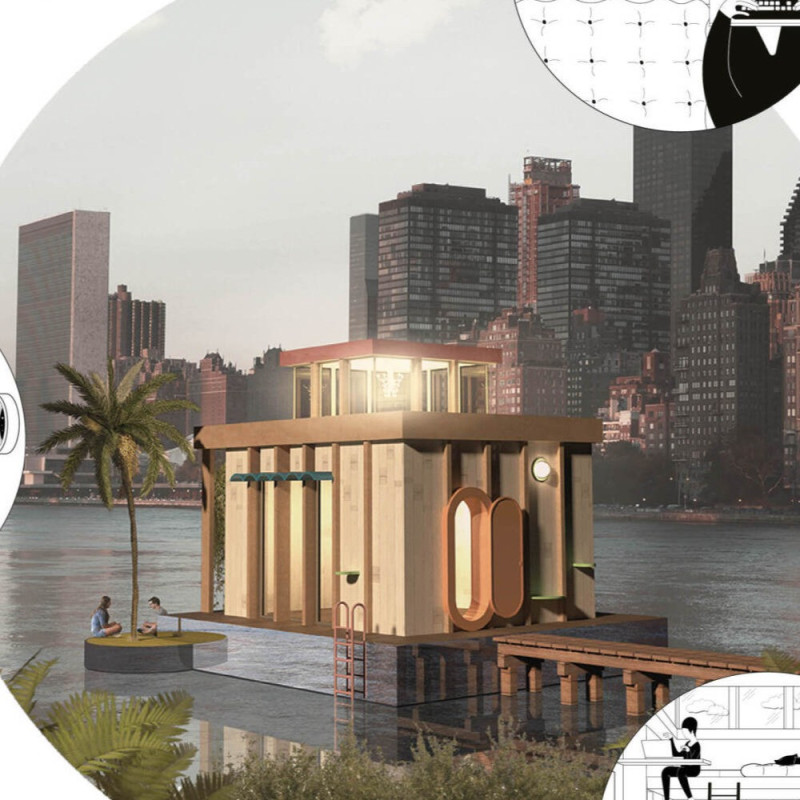5 key facts about this project
The design located on the Hudson riverbanks in New York City presents a response to the challenges of urban living through the concept of a floating home. This residence caters to a young couple seeking a balance between the demands of city life and the desire for access to nature. Emphasizing both adaptability and functionality, the home aims to make the most out of limited space.
Concept and Design Intent
The concept revolves around the idea of the "Symbiotic Home," which investigates how space can interact with its inhabitants. The design aims to create interiors that are mostly open but enriched by various architectural elements. These elements serve multiple purposes, helping to keep the central area flexible and suitable for a wide range of activities, from everyday tasks to social gatherings.
Material Selection
Distinctive features include the opportunity to sleep outside, a shower designed for enjoying views of the river, and a central domestic island that serves as a focal point. Material choice is crucial to the execution of the project. Photovoltaic panels are incorporated to promote energy efficiency, while insulated modular panels improve thermal performance. Wooden beams are used to provide structural support and create a connection to the natural surroundings.
Architectural Devices
The design includes various architectural devices, such as a sanitizing entrance, a multipurpose ring sofa, and a hidden cinema. These features enhance usability and promote efficient use of space, reflecting a careful balance of technology and daily life. The project also addresses environmental concerns, specifically rising sea levels, by employing a floating structure as a practical solution.
Final Design Detail
Large operable windows allow for abundant natural light and foster a connection between indoor and outdoor spaces. This feature encourages occupants to engage with the river environment while enjoying the comforts of home, enhancing both the living experience and the overall atmosphere of the residence.




















































